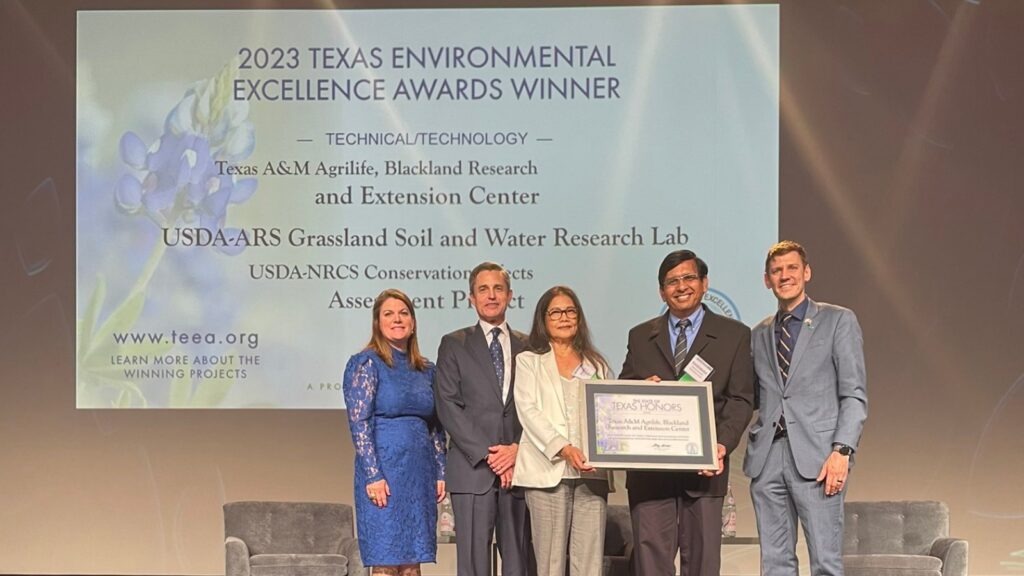Texas A&M AgriLife Research-led team wins state technology development award
Digital tools for measuring watershed impacts recognized by Texas Commission on Environmental Quality
Led by Texas A&M AgriLife Research scientists in Temple, a statewide effort to integrate technologies for better prediction of environmental impacts in watersheds has garnered a Texas Environmental Excellence Award in the technical and technology category.

Recipient entities of the award, presented by the Texas Commission on Environmental Quality, TCEQ, include the Texas A&M AgriLife Blackland Research and Extension Center at Temple; the U.S. Department of Agriculture Agricultural Research Service Grassland Soil and Water Research Lab; and the USDA Natural Resources Conservation Service Conservation Effects Assessment Project.
The award was presented May 17 as part of the TCEQ Environmental Trade Fair and Conference. It honors achievements in environmental preservation and protection.
New digital tools for complex environmental assessments
The award recognized a series of projects to develop digital tools that provide new abilities for researchers in Texas and across the globe to quantify and predict a variety of environmental impacts in complex watersheds within minutes. They use millions of data points to provide insights.
“Prior to the creation of these tools, for example, a stream or reservoir predictive analysis would take several months to complete,” said Raghavan “Srini” Srinivasan, Ph.D., whose technology has been integrated with others to achieve the new predictive tools.
Srinivasan, research director of the Texas A&M AgriLife center at Temple is the co-developer and program leader of the Soil and Water Assessment Tool, SWAT, along with USDA-ARS. He is a distinguished professor and Regents Fellow in the Texas A&M College of Agriculture and Life Sciences Department of Ecology and Conservation Biology and Department of Biological and Agricultural Engineering; and director of the Texas A&M Spatial Sciences Laboratory.
“These tools have transformed how watershed analysis and management evaluations are addressed, and they have helped inform and change environmental policy,” Srinivasan said.
The new tools analyze the sources of water contamination in streams and reservoirs by bacteria, sediment, nitrogen, phosphorus and pesticides.
Integrating technologies
Four computer modeling systems have combined to create the new system for advanced analysis.
SWAT is a watershed-scale hydrologic and water quality model.
Hydrologic and Water Quality System, or HAWQS, is a user-friendly platform linking SWAT with soil, landscape, climate, weather, crop, livestock and management data. It also provides statistical and graphics tools for evaluating outputs. HAWQS provides the user a dashboard/interface to quickly and easily build SWAT models to analyze alternative soil and water conservation policies and practices, infrastructure, and weather and climate scenarios for watersheds.
Texas Best Management Evaluation Tool, TBMET, is a web-based tool for predicting sediment and nutrient losses from agricultural fields under a variety of conservation practices using SWAT. TBMET was developed by USDA-ARS scientists at Temple in conjunction with the Texas State Soil and Water Conservation Board.
Finally, the Spatially Explicit Load Enrichment Calculation Tool, SELECT, identifies and estimates potential pathogen loads resulting from various fecal sources in watersheds.
“A combination of efforts over the last 30 years have culminated in the advances we have made to date,” Srinivasan said. “Our organizations continue our collaboration to bring big data and new technologies like artificial intelligence to bear on the environmental challenges of our time.”


